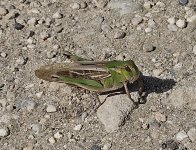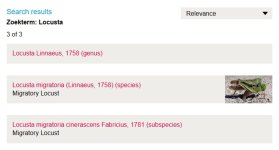Thanks for that paper - google will translate the bits I can't!
I haven't been looking at orthoptera for very long but I have discovered that Bernard Defaut writes a lot of papers related to taxonomy some of which ends up being adopted by (whoever runs) the Orthoptera Species File (e.g. the genus
Pseudochorthippus, and species such as
Aiolopus piussanti and
Sphingonotus lluciapomaresi) and some of it which doesn't (e.g. a large group of
Chorthippus species that he thought should become
Gomphocerippus species). The latter example is in
https://www.researchgate.net/public..._Gomphocerinae_de_France_Orthoptera_Acrididae
I'm afraid I don't have a completely public domain link for that.






